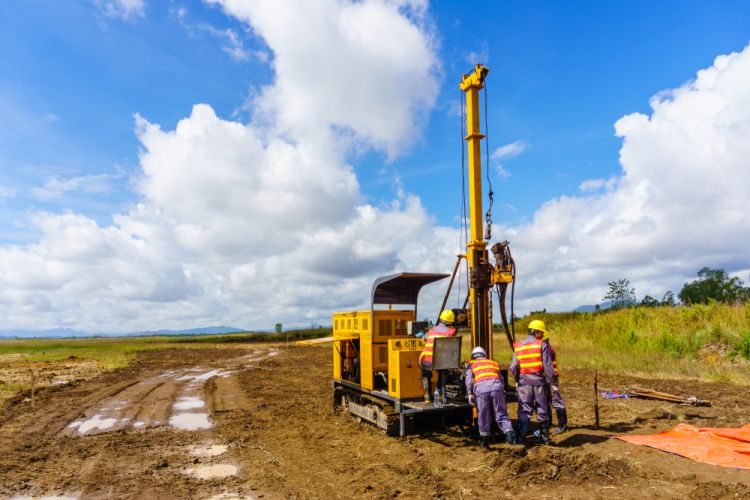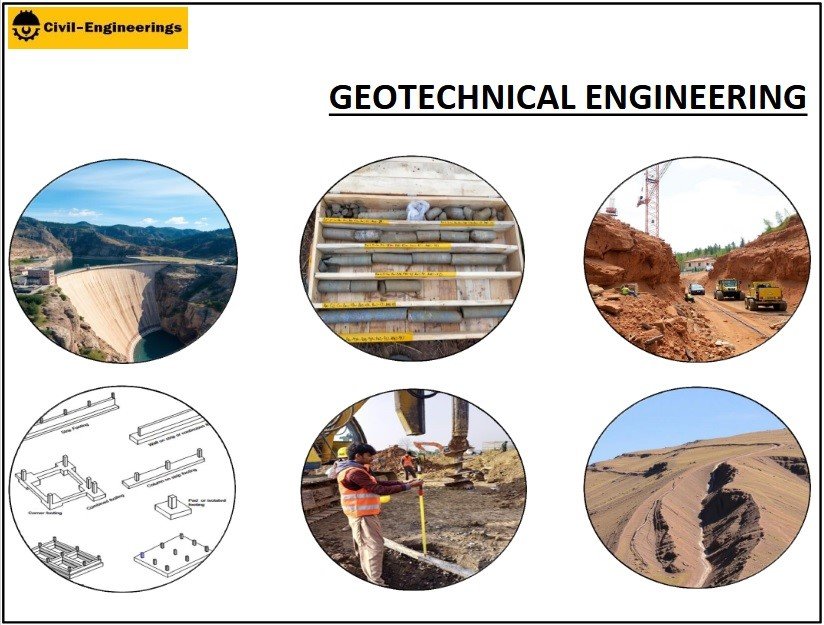Not known Details About Geotechnical Engineering For Construction Projects
The Only Guide to Geotechnical Engineering For Construction Projects
Table of ContentsIndicators on Geotechnical Engineering For Construction Projects You Need To KnowHow Geotechnical Engineering For Construction Projects can Save You Time, Stress, and Money.What Does Geotechnical Engineering For Construction Projects Mean?Some Known Questions About Geotechnical Engineering For Construction Projects.Not known Details About Geotechnical Engineering For Construction Projects Rumored Buzz on Geotechnical Engineering For Construction ProjectsNot known Details About Geotechnical Engineering For Construction Projects
and Kovacs, W. (1981 ), An Introduction to Geotechnical Design, Prentice-Hall, Inc. Deep Check Tech (2023 ): Deep Check Technology uncovers concealed frameworks at the site of Denmark's highest structure. "Geofrost Coring". GEOFROST. Retrieved 20 November 2020. Han, Jie (2015 ). Principles and Technique of Ground Enhancement. Wiley. ISBN 9781118421307. RAJU, V. R.Ground Improvement Technologies and Situation Histories. Singapore: Research Study Posting Services. p. 809. ISBN978-981-08-3124-0. Ground Improvement Concepts And Applications In Asia. Pariseau, William G. (2011 ). Style analysis in rock auto mechanics. CRC Press. Hegde, A.M. and Palsule P (Geotechnical Engineering for Construction Projects).S. (2020 ), Performance of Geosynthetics Reinforced Subgrade Subjected to Repeated Car Loads: Experimental and Numerical Researches.
Cengage Learning, Stamford, 666 p. Atkinson, J., 2007. The technicians of dirts and structures. The Observational Approach in ground design principles and applications.
The Buzz on Geotechnical Engineering For Construction Projects
Lab and field screening plays a critical duty in this process. By drawing out samples from the earth's subsurface and applying a collection of examinations, geotechnical engineers can predict the behavior of dirt layers and assess their viability for various building and construction endeavours. The significance of geotechnical design in civil design can not be overstated, attributable to numerous elements: The preliminary action in any geotechnical research involves figuring out the dirt kind at the construction website.
Comprehending these features ensures that only appropriate dirt kinds are chosen for the development, thus avoiding potential structural failures. The foundation functions as the bedrock of any kind of construction project. Selecting the suitable foundation type is a choice that depends upon the extensive analysis given by geotechnical engineering. This guarantees the durability and stability of frameworks by suiting the loads they will certainly birth.

Geotechnical website examination is an essential action in the preparation and execution of any construction project. It includes the collection and analysis of data related to the physical buildings of soil and rock under a recommended building and construction site. This information is essential for the design and construction of secure, steady, and sustainable frameworks.
See This Report about Geotechnical Engineering For Construction Projects
In this blog site, we will dive into the significance of geotechnical website examination, its numerous parts, and how it benefits construction jobs. Geotechnical site investigation, additionally known as subsurface exploration, entails a series of tasks focused on figuring out the dirt, rock, and groundwater conditions at a building and construction site. The main purposes are to recognize prospective geotechnical dangers, assess the design buildings of subsurface products, and provide suggestions for the style and building and construction of structures, preserving wall surfaces, and other structures.
The workdesk study helps in recognizing prospective geotechnical issues and intending the succeeding fieldwork. This includes observing the topography, drainage patterns, existing frameworks, plant life, and any type of signs of instability or disintegration.
6 Simple Techniques For Geotechnical Engineering For Construction Projects
Shallow test pits are excavated to directly observe and sample the dirt and rock. This approach serves for studying the top layers of the subsurface and identifying near-surface risks. Non-invasive geophysical methods, such as seismic refraction, ground-penetrating radar (GPR), and electric resistivity tomography (ERT), are used to map subsurface conditions and identify anomalies.
Soil and rock examples collected during the area examination are subjected to research laboratory screening to determine their physical and mechanical residential or commercial properties. Usual laboratory tests consist of grain dimension evaluation, Atterberg limits, compaction examinations, triaxial shear tests, and debt consolidation examinations. These tests offer necessary data for geotechnical evaluation and layout. The information collected from the workdesk study, site reconnaissance, field investigation, and lab screening are assessed and interpreted to develop an extensive understanding of the subsurface conditions.
The primary benefit of geotechnical website examination is making certain the safety and security and stability of frameworks. By understanding the subsurface problems, engineers can develop foundations and other architectural components that can withstand the loads and environmental pressures they will certainly go through. This reduces the danger of settlement, decrease, and architectural failure.
The Of Geotechnical Engineering For Construction Projects
Comprehending soil features can direct the selection of excavation methods, dewatering approaches, and ground enhancement measures. This makes sure efficient and risk-free construction techniques. Geotechnical site examinations are typically called for by building click for info codes and guidelines. Complying with these needs guarantees conformity with lawful and safety criteria, avoiding prospective lawful liabilities and job delays.
This info is very useful for project managers, designers, and service providers in creating reasonable routines, budget plans, and backup strategies. Geotechnical Engineering for Construction Projects. Skyscraper Structure in a Coastal AreaIn a coastal city, a high-rise residential building was planned on a website with believed loosened sand down payments and a high water table. A detailed geotechnical investigation, consisting of borehole boring, CPT, and geophysical studies, was performed
Geotechnical Engineering For Construction Projects Things To Know Before You Buy
Based on these searchings for, the foundation design was changed to include deep heap structures prolonging right into steady strata, and ground renovation methods, such as vibro-compaction, were executed to mitigate liquefaction threats. This positive method ensured the safety and security and security of the building while preventing expensive post-construction remediation. Framework Development on a Sloping TerrainA significant infrastructure task, entailing the building of a freeway and bridges, was intended on a hilly surface with high slopes.

The Leaning Tower of Pisa (Italy), a famous architectural marvel, is well known for its unexpected tilt from considerable geotechnical issues. The tower's structure was improperly developed to take care of the soft, unsteady soil under it, resulting in irregular settlement and its unique lean. Our world is dotted with excellent infrastructure projectsfrom towering high-rise buildings to stretching bridgesall standing testimony to the development of the numerous building tools and techniques readily available.
Geotechnical engineering is a specific area within civil engineering that concentrates on examining the actions of earth products. This branch delves deep into the groundinvestigating exactly how the dirt, rock, and groundwater at a building website can check out here influenceand be influenced bythe infrastructure that we set up on and right into them. Prior to a solitary block is laid or a concrete structure put, geotechnical engineers probe into the earthgathering crucial information concerning the website's dirt composition, rock structure, and groundwater degrees.
7 Simple Techniques For Geotechnical Engineering For Construction Projects

is a device utilized to examine the honesty and load-bearing ability of stacks throughout installment, leveraging the concept of wave breeding. It enhances building and construction effectiveness by giving real-time analyses, hence making certain secure and efficient stack structures. One of the functional applications of geotechnical design entails determining and performing the appropriate methods for structure building and construction.
Stack driving represents even more than the plain act of putting architectural components into the ground. However, it is a very carefully managed process of transferring a structure's lots past the less stable dirt layers more detailed to the surfacedown to the a lot more considerable strata that lie under. In the instance of stack driving, consider just how geotechnical engineers expertly utilize this technique to uniformly distribute the framework's weight.